Loading page header ... or Your browser does not support JavaScript
Next Building the 'Foldo' folding dinghy: |
|
|
The 'Foldo' is a 2.78 m (9' 1.5") folding plywood pram dinghy with a narrow keel strake instead of a Vee-shaped keel. No Plans - for inspiration only! |
|
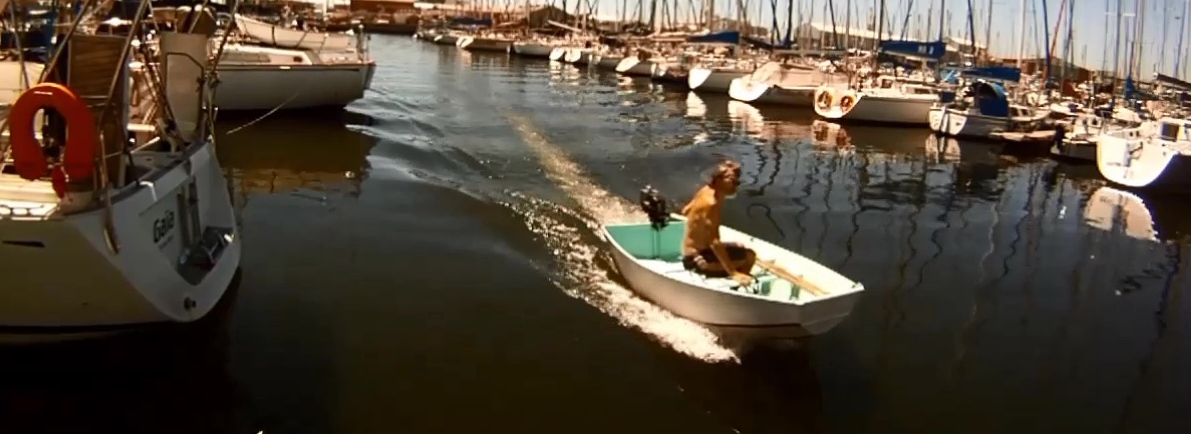 |
|
| The keel strake is used to space out the panels for easier folding and allows the two transoms to be stored inside the folded dinghy. I had hoped to be able to fit the thwarts inside too, but there just was not enough space. She is built from individual hull panels that have soft hinges. Hinges were made from 65mm (2 1/2") fire hydrant hose glued along the chine and keel strake. The hose I used is a 'lay-flat' hose and my source was the local fire department. They had some lengths of 'retired' hose that they were willing to donate to the project. To make maximum use of two sheets of Marine grade Okoume plywood that I wanted to use, I had to go through a few iterations in the design process. Luckily I had a small off-cut which was used to cut out the bow transom, there was just not enough space on two sheets without making the dinghy much smaller. |
|
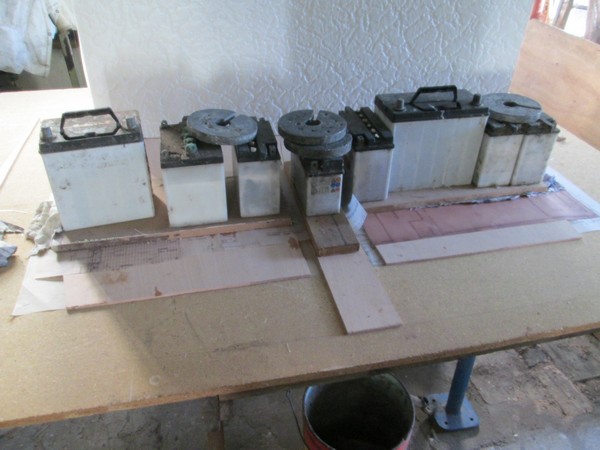 |
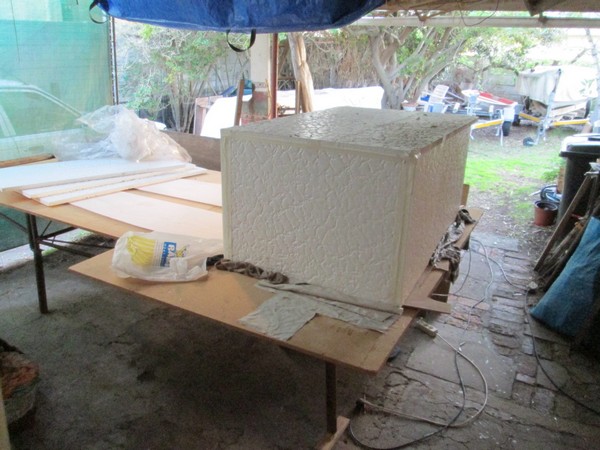 |
| The hull panels are longer than the 2.44m length of the plywood sheets so extensions were added using a glass/epoxy butt joint. The method is shown in more detail in previous build diaries like the Building the Piragua | As it was rather cold I placed a 'hot box' made from styrofoam panels over the joints and kept the temperature inside above 20 degrees centigrade using a thermostatically controlled electric heater. |
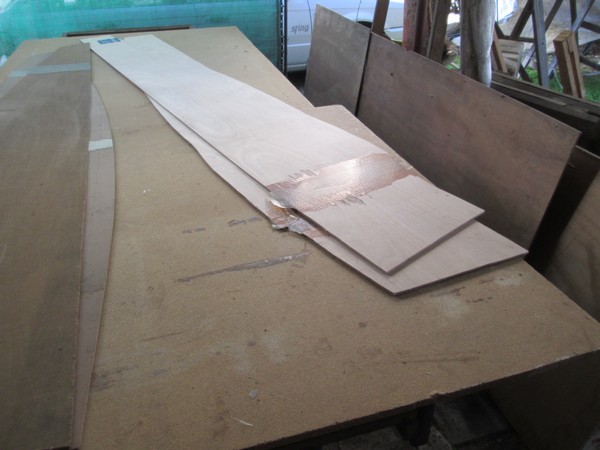
|
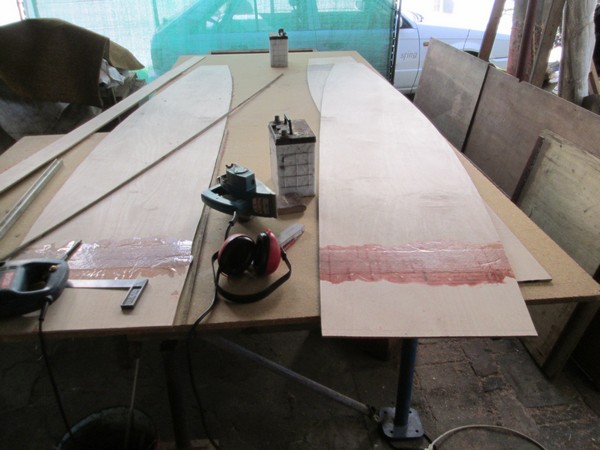 |
| Completed rough topside panels on the right, hardboard patterns on the left. The templates will be used to mark off correct hull panel shapes on port-side plywood blanks. Starboard-side panels were then template routed using the port-side panels as templates. | Bottom and topside panels after cutting out and template routing. |
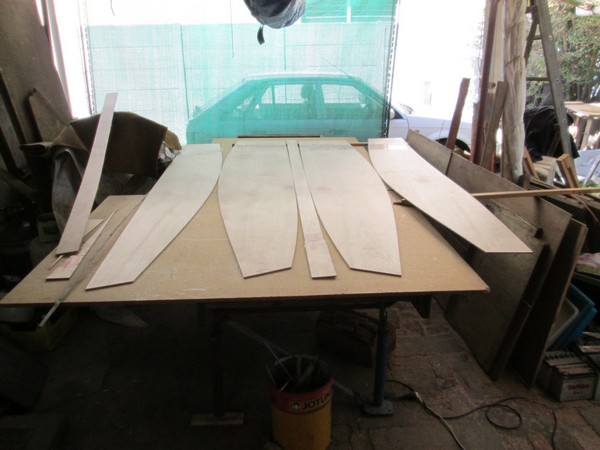
|
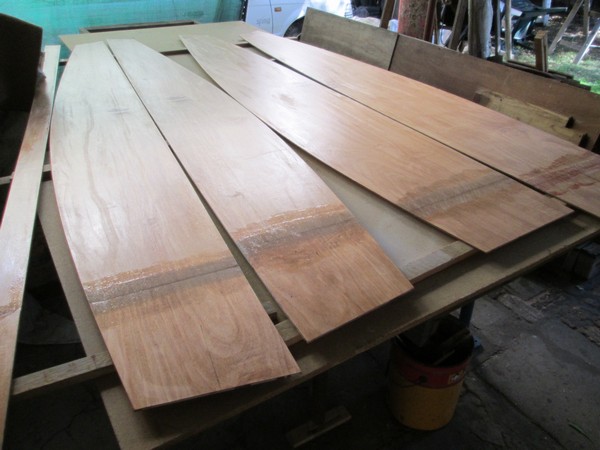 |
| Full set of bottom and topside panels, as well as keel strake layed out, ready for epoxy seal-jpg. | All plywood panels are now coated twice using laminating epoxy. |
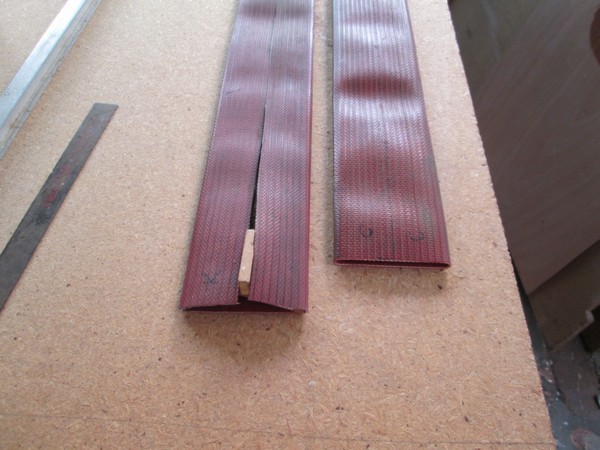
|
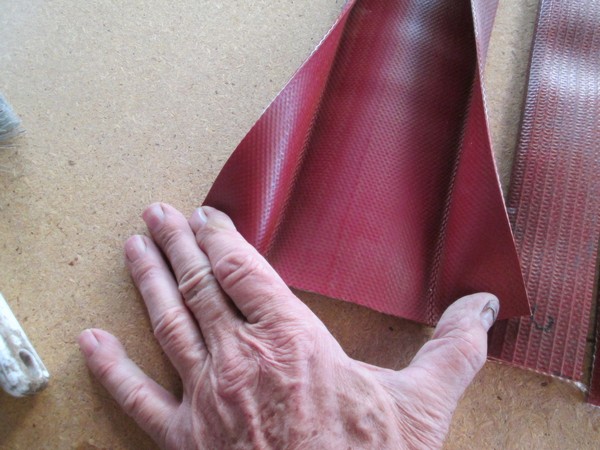 |
| Fire hose prepared for the keel strake (left) is simply slit along the length on only one side. For the chines (right) the hose is cut in half all the way through and makes port and starboard chine hinges. | The hose for the keel strake in close up. The hose for the keel strake/bottom panel joint is completely glued on the long side to the keel strake. The two short legs will be glued to the bottom panels. |
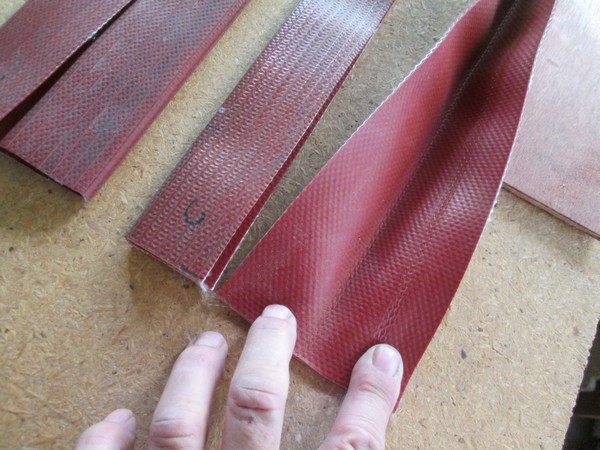
|
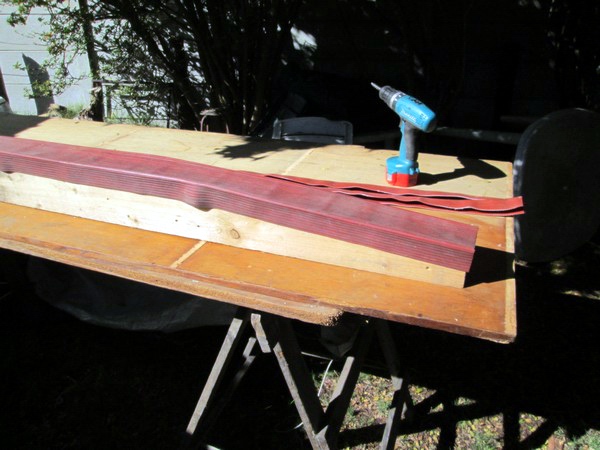 |
| The chine 'hinge'- half a fire hydrant hose! So basically all that is required is two lengths of hose of about 3m. | A jig is necessary for the glueing of the keel strake/bottom panel 'hinge'. First the hose is glued to the keel strake. Spacers made from scarp plywood, covered with Mylar sheet were fitted to port and starboard side of the jig during glueing process to ensure correct spacing either side for the bottom panels. |
Top of Page
Loading first page footer ... or Your browser does not support JavaScript
Loading second page footer ... or Your browser does not support JavaScript